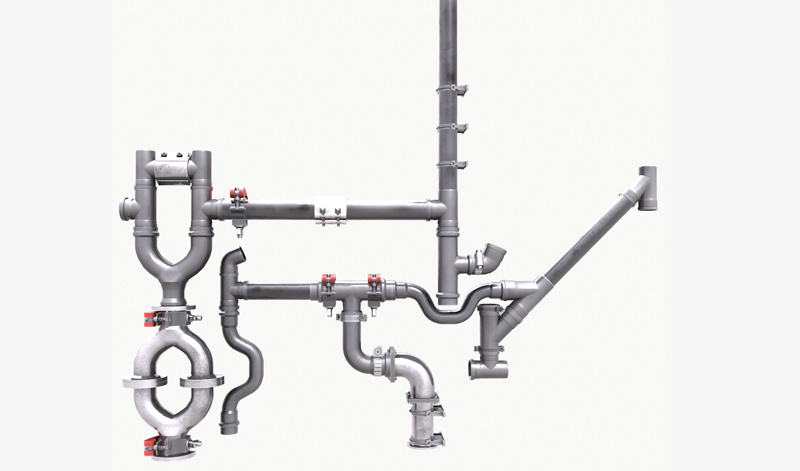How To Join Stainless Steel Pipes
-
2022-10-25
-

Joining stainless steel pipe doesn’t have to involve an expensive call to a professional, though this may be your best option if you are dealing with an older home or have multiple locations to repair.
Align the ends of the pipes.
Now that you have your pipes all cut, it’s time to join them together. To do this, you’ll need to make sure that the ends of each pipe are perfectly square and aligned with one another. You can use a level or straight edge as a guide for this step. Once they are properly aligned, secure the pipes by using pipe hangers (you can find these in your local hardware store).
Clamp the pipe together.
Once you have the pipes joined, you’ll want to secure them in place. This can be done by using clamps. Clamps are often made from metal and are designed to hold two objects together tightly.
Using clamps is also important because it allows for pipes that are otherwise not connected to each other (such as when they’re on opposite sides of an object) to be held together in a stable manner during construction or use.
If you’re building something out of stainless steel plumbing and need a quick fix, there are already many options available online. But if this isn’t an option either because time isn’t on your side or because you’re looking for something more permanent, here’s what you should know about joining pipes:
Take a look at the alignment and make a decision.
Now it’s time to check the alignment and make a decision. If you’re lucky, both pipes will align perfectly. But if they don’t, there are a couple of options: You can straighten out the pipes if they’re bowed or adjust their position if they aren’t aligned.
The easiest way to straighten out a bent pipe is to use some sort of fixed guide so that you can push the pipe into place without damaging it or scratching the surface with your hands. For instance, if one pipe is higher than another but still parallel, then an L-shaped piece of wood would work well as a guide for pushing down on one end more than another until both sides are level with each other again (see Figure 1).
Apply flux paste to all surfaces that will be joined.
Use flux paste to help the solder flow. Apply flux paste to both sides of the joint and then mix in water so that it’s thin enough to spread easily on both sides of the joint. You’ll want enough flux paste covering all surfaces of your joint and a thin film covering each surface, too.
Heat up and add solder to the joint.
- Heat up the joint. Use a torch to heat up the joint until it’s hot enough to melt the solder.
- Apply solder to the joint, then immediately use a wet rag to cool down the area around your pipe so you don’t burn yourself with molten metal or warp its shape by applying too much heat too quickly!
- Inspect your completed pipe; if no leaks are present and everything looks sound, congratulations! You’ve successfully joined stainless steel pipes using soldering techniques!
Use a wet rag to cool down the joint.
You should use a wet rag to cool down the joint. This will help prevent the pipe from warping.
The best way to do this is by using a wet rag or a wet sponge because they’re disposable and you can easily clean them up. You should never use water directly on the pipe, as it could cause corrosion issues later down the line. A dry rag may also be used to clean off excess solder so that there are no metal shavings left behind when putting together your project
Inspect the completed joint for any leaks.
Inspect the completed joint for any leaks. If there are leaks, repeat the process and check again until you find a joint that doesn’t leak.
If there are no leaks, you’re done! You’ve just joined stainless steel pipes using a TIG welder! Congratulations!
Joining stainless steel pipes doesn’t have to involve an expensive call to a professional, though this may be your best option if you are dealing with an older home or have multiple locations to repair.
If you are not sure about your skills, it is best to call a professional. If this is the first time that you have tried to repair a stainless steel pipe, it is best to call a professional. The same goes if your home or building has multiple locations that need repair; the cost of having an experienced plumber come out and fix each location will be less than what it costs to purchase everything needed for this DIY project.
Conclusion
This is a simple project that can be done at home in the afternoon. If you have any questions or need more help, please contact us at [email protected]



